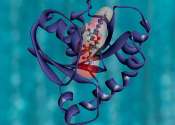New biosensors quickly detect coronavirus proteins and antibodies
Scientists have created a new way to detect the proteins that make up the pandemic coronavirus, as well as antibodies against it. They designed protein-based biosensors that glow when mixed with components of the virus or ...









